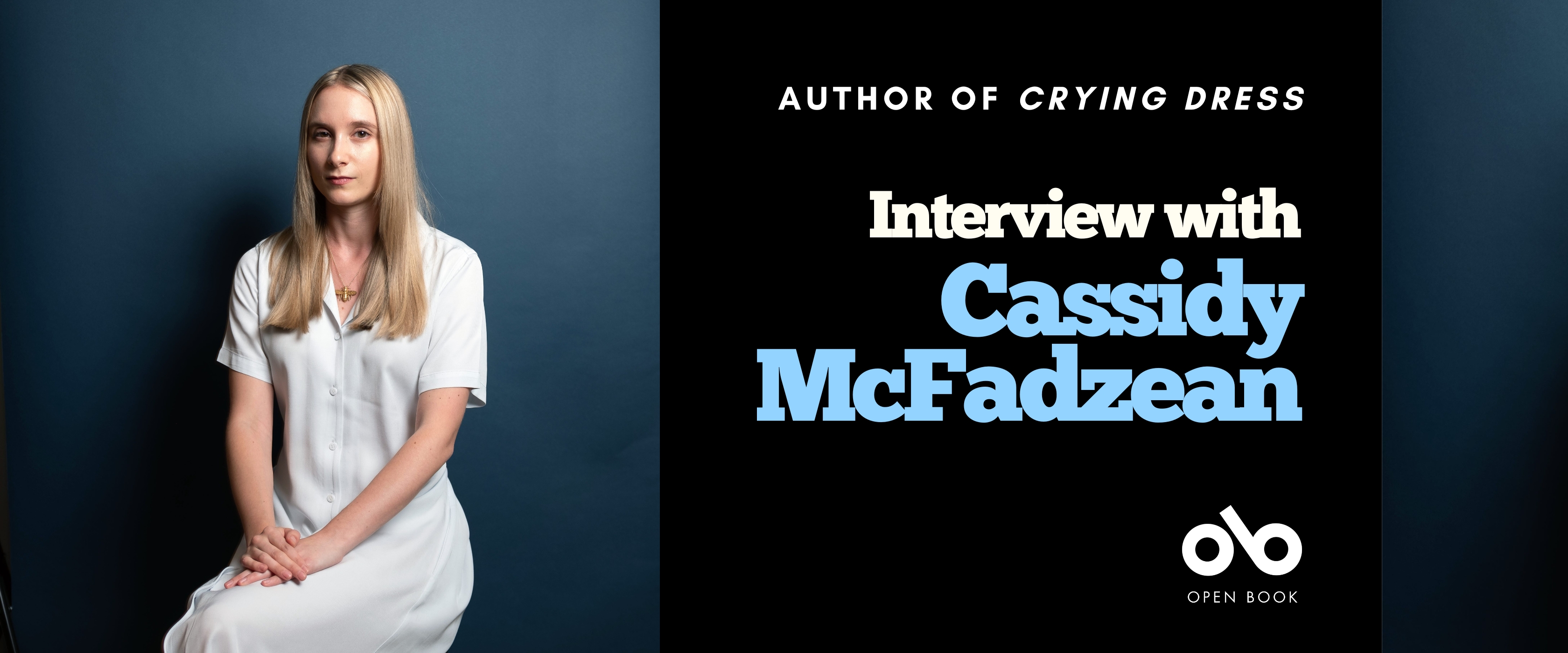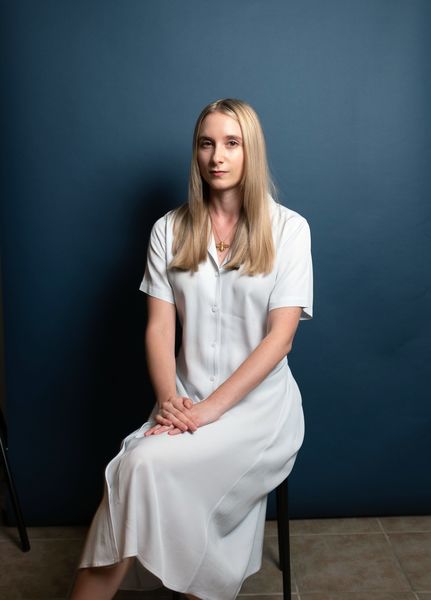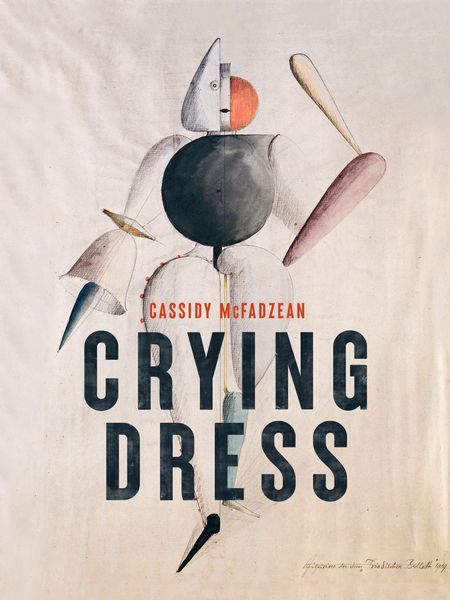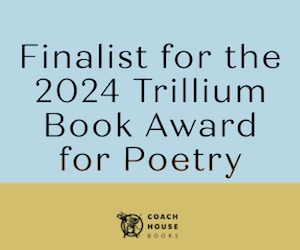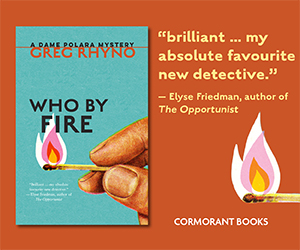Acclaimed Poet Cassidy McFadzean Explores Multiplicity of Meaning in Crying Dress
Already established as one of Canada's most promising young poets, Cassidy McFadzean has built a stellar early catalogue while studying at some of the most prestigious writing schools in North America.
In Crying Dress (House of Anansi Press), McFadzean's third collection of poetry, the author's lines display a musicality and sense of rhythm that draws the reader in as complex ideas wind in and out of these pages. All manner of images inspire the author: Ghosts in the gardens of Sicily and Brooklyn, the racket of urban Toronto, close and intimate domestic spaces, and the stark feelings bound up in sobriety and grief.
McFadzean's poems explore the multiplicity of meaning bound up in the harmonious and decidedly unharmonious elements in our lives, all with a signature voice and verve that has set the author apart in previous collections.
We're very excited to share this Line and Lyric interview with the author, and to delve deeper into the pages of her latest poetry book.
Open Book:
Tell us about this collection and how it came to be.
Cassidy McFadzean
Crying Dress is my first book of poems in five years. I wanted to write a book exploring fragmentation because I was going through what felt like a very disjointed period. I began writing the book in the early days of a new relationship, followed by my mother’s sudden death in the fall of 2020, and moving to Brooklyn for grad school in the fall of 2021. Upended by grief, I was unable to write poems in the same concentrated manner I had before, sitting down at my laptop and writing. A lot of these poems were written as discrete lines on my phone while walking around Toronto and Brooklyn, which I then edited at home. This way of writing poetry using collage and piecing together lines was born out the destabilising way that I was experiencing the world, but I ended up finding the process really generative and exciting.
OB:
Can you tell us a bit about how you chose your title? If it’s a title of one of the poems, how does that piece fit into the collection? If it’s not a poem title, how does it encapsulate the collection as a whole?
CM:
Crying Dress is my first book with a title poem. I had previously avoided title poems as I didn’t want to give too much weight to a single poem, but for Crying Dress, it felt right since the poem offers an ars poetica for the collection as a whole. The poem also mentions Oskar Schlemmer’s Triadic Ballet, which is the inspiration for cover image. Even divorced from the context of the specific poem, I liked the strangeness of the title: what is a crying dress? Is it a specific dress you wear while you’re crying? Is “crying,” an adjective, hearkening back to the Middle English meaning of asking earnestly or proclaiming publicly? When I Google the phrase, I am inundated with stock images of women crying in prom and wedding dresses, but even these cliches of femininity feel in conversation with the books’ subversion of idioms and puns.
Your CanLit News
Subscribe to Open Book’s newsletter to get local book events, literary content, writing tips, and more in your inbox
OB:
Did you write poems individually and begin assembling this collection from stand-alone pieces, or did you write with a view to putting together a collection from the beginning?
CM:
I tend to write poems individually and then compile them into a collection afterwards, searching for throughlines and echoes as I order the poems. This is my first book that is separated into sections—the seasons of the year—so it definitely feels a bit more focused than my first two. I decided on sections since many of the poems refer to the natural world, and I began thinking of the book as tracing cycles of birth, growth, stasis, and decay. I didn’t write the book with a chronological narrative in mind, but I wanted to offer one way of entering the book since some of the poems are a little obscure.
OB:
What were you reading while writing this collection?
CM:
I was inspired by Hoa Nguyen’s use of form as well as her courses on Harryette Mullen and Lorine Niedecker. I learned so much from Mullen’s sound play and Niedecker’s sense of collage and juxtaposition, and Hoa is a brilliant poet and instructor. Later in the writing process, I was reading a lot of Emily Skillings and Sara Nicholson. They’re both published by The Song Cave, one of the most exciting small presses around.
OB:
Who did you dedicate the collection to and why?
CM:
The book is dedicated to my partner Kourosh, who is an architect. In the course of our relationship, I began paying more attention to buildings I was inhabiting. When we met, I was living in Toronto’s Annex neighbourhood at 100 Spadina Road, a building made famous by Estonian architect Uno Prii’s inventive architecture. There’s a lot of Uno Prii in the book, but also reflections on buildings and form more generally. I also borrow quite a few lines from conversations that I overheard at museums or parks, but many of the observations about architecture come from Kourosh.
OB:
Was there a question or questions that you were exploring, consciously from the beginning or unconsciously and which becoming clear to you later, in this collection?
CM:
One of the questions I was interested in exploring is one of musicality. I love using techniques like assonance, alliteration, and rhyme as well as other ways of playing with sound in my poems. I am also a person who stutters, and I began thinking about the role of dissonance and noise in my poetry. Have I been subconsciously privileging harmonious sounds over discord and cacophony that my voice sometimes adopts? What would happen to the formal and thematic qualities of my work if I embraced the dysfluency of my voice instead of concealing my stutter through song? I was interested in exploring linguistic and communicative “noise” as a means of introducing dysfluency into my writing and thinking more broadly about the ways that sound and cohesion might operate in my poetry.
OB:
What are you working on next?
CM:
I’m working on a collection of poems about my mom’s death, which I began writing midway through Crying Dress. Grief occasionally enters into Crying Dress, but it’s more of a sideways glance than addressing it directly head on. Many of my grief poems—like my sonnet sequence Third State of Being published by Gaspereau Press— didn’t formally fit into this book and I wanted to give them their own space in a separate collection.
I’m also working on a collection of short stories, exploring how grief fractures reality, with surreal and speculative undertones.
___________________________________________
Cassidy McFadzean studied poetry at the Iowa Writers’ Workshop, and fiction at Brooklyn College. She is the author of two books of poetry: Drolleries (McClelland & Stewart 2019), shortlisted for the Raymond Souster Award, and Hacker Packer (M&S 2015), which won two Saskatchewan Book Awards and was a finalist for the Gerald Lampert Memorial Award. Her crown of sonnets, Third State of Being, was published by Gaspereau Press in 2022. She lives in Toronto.
